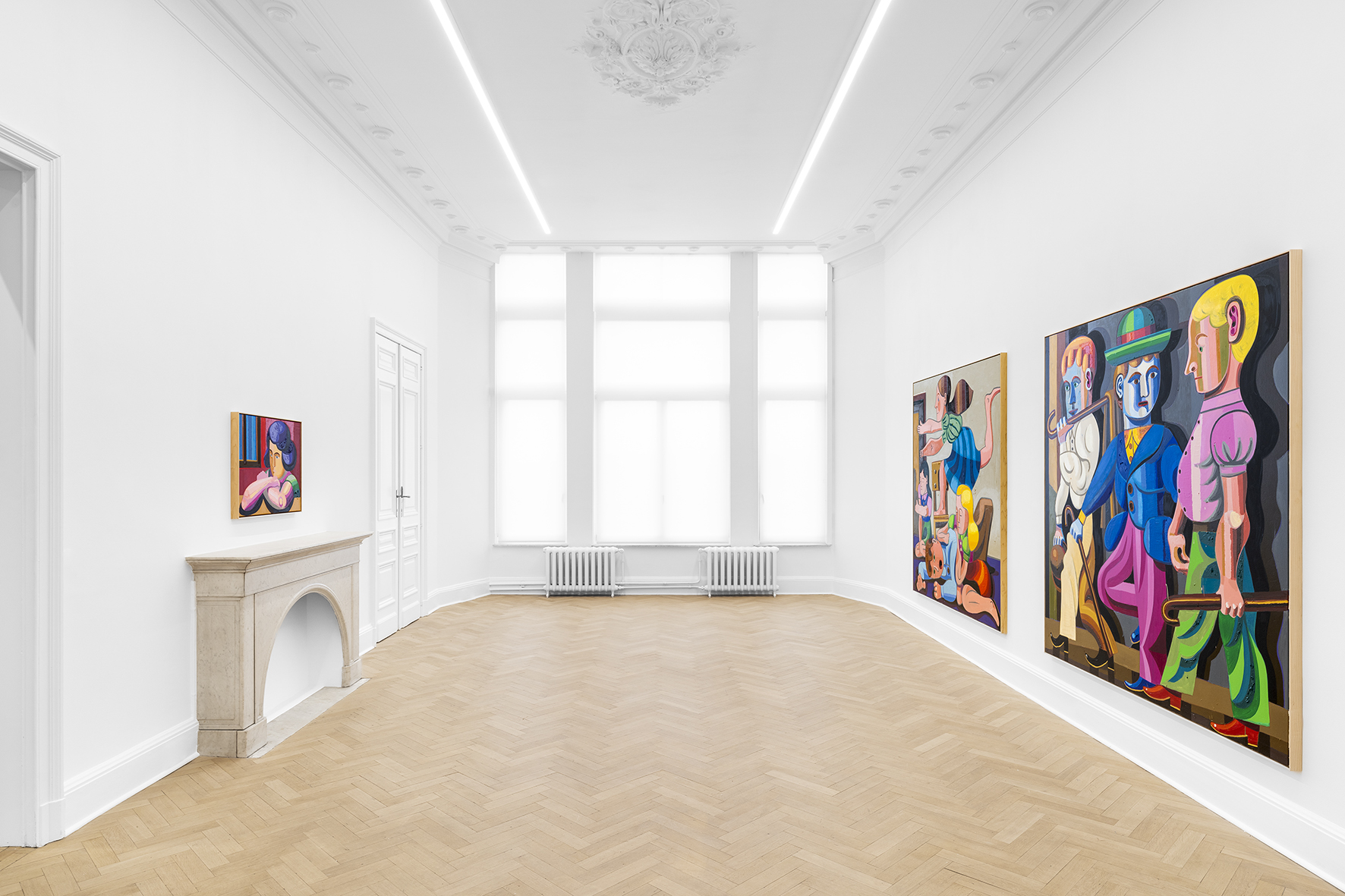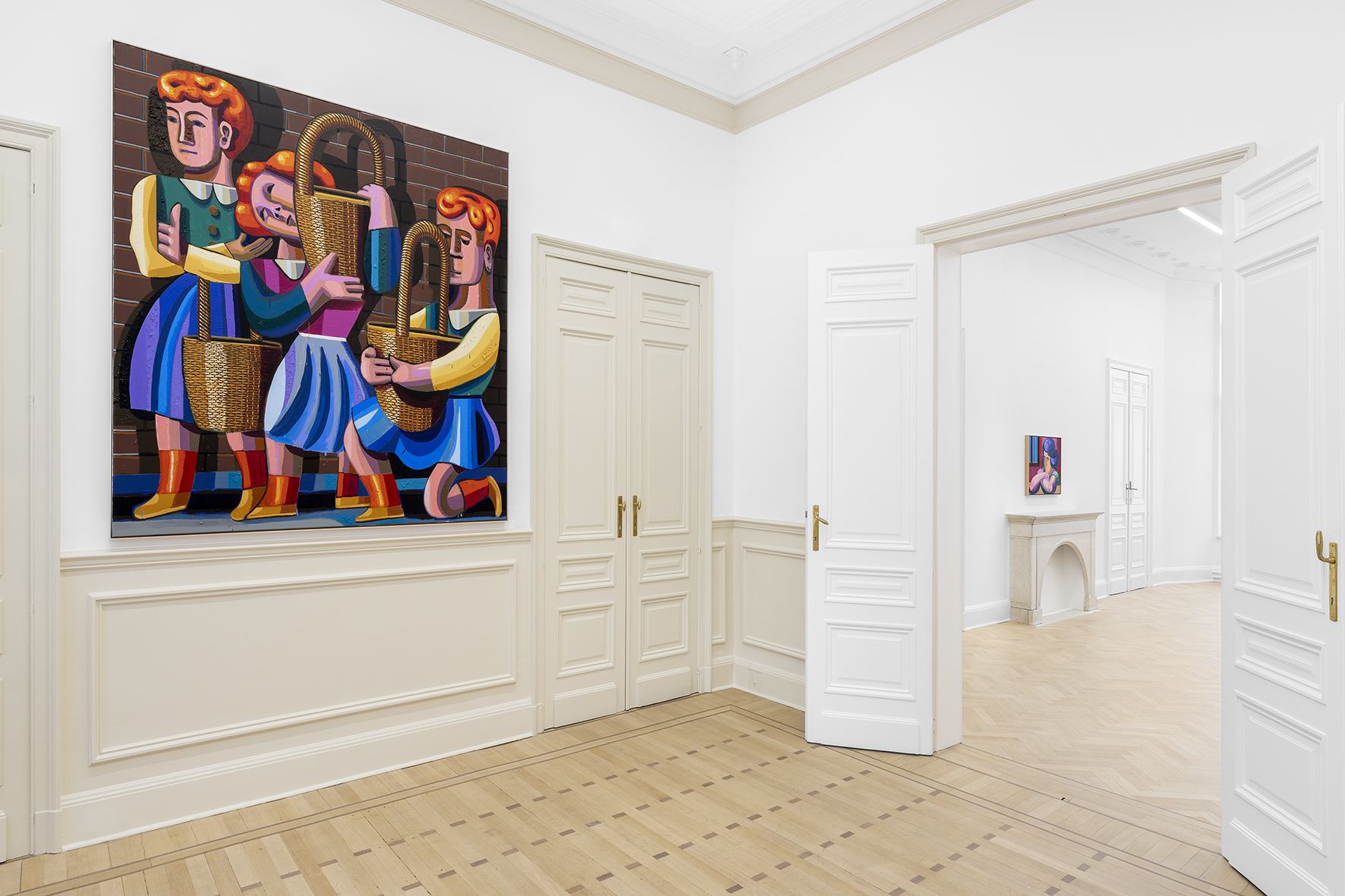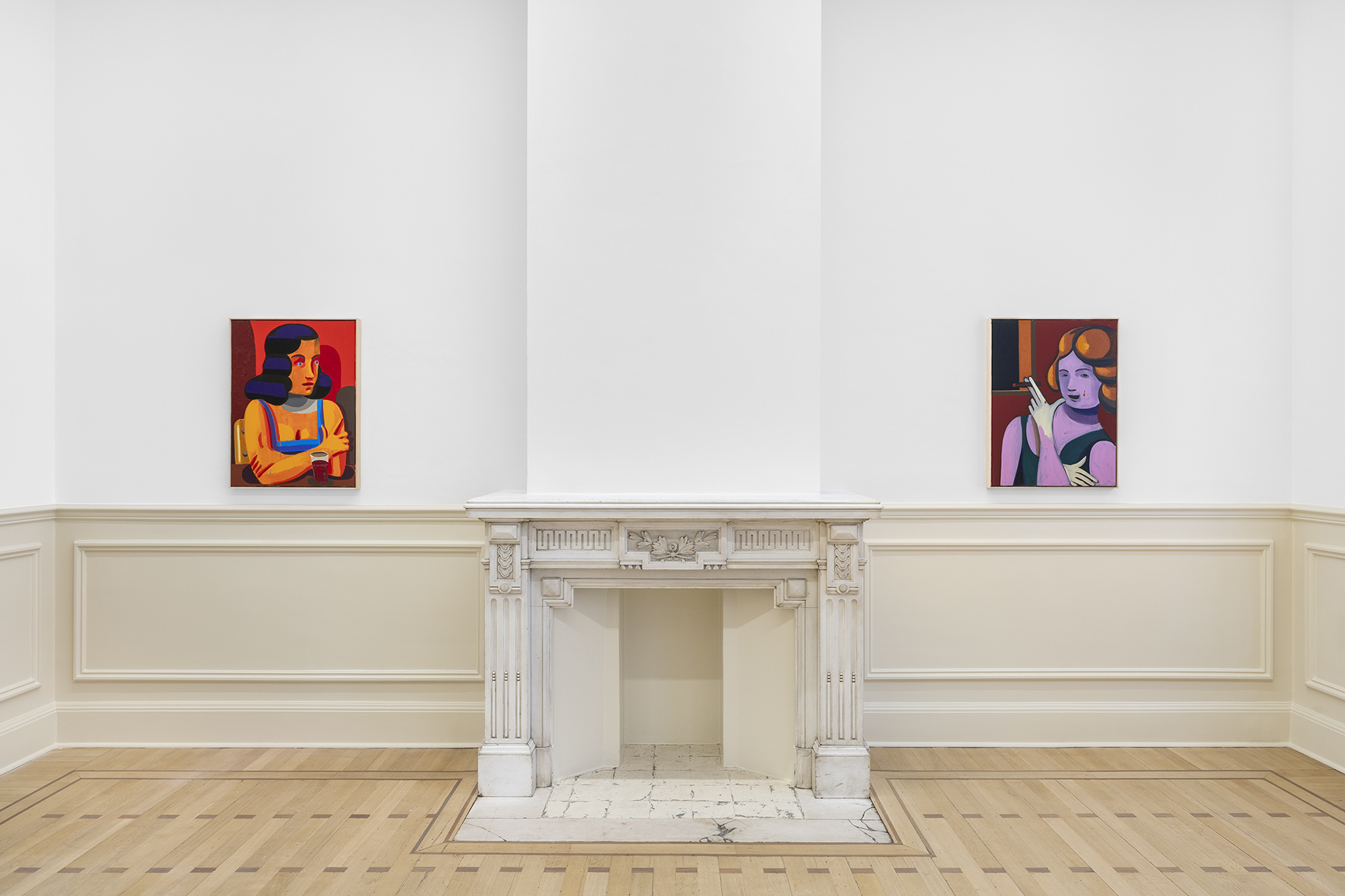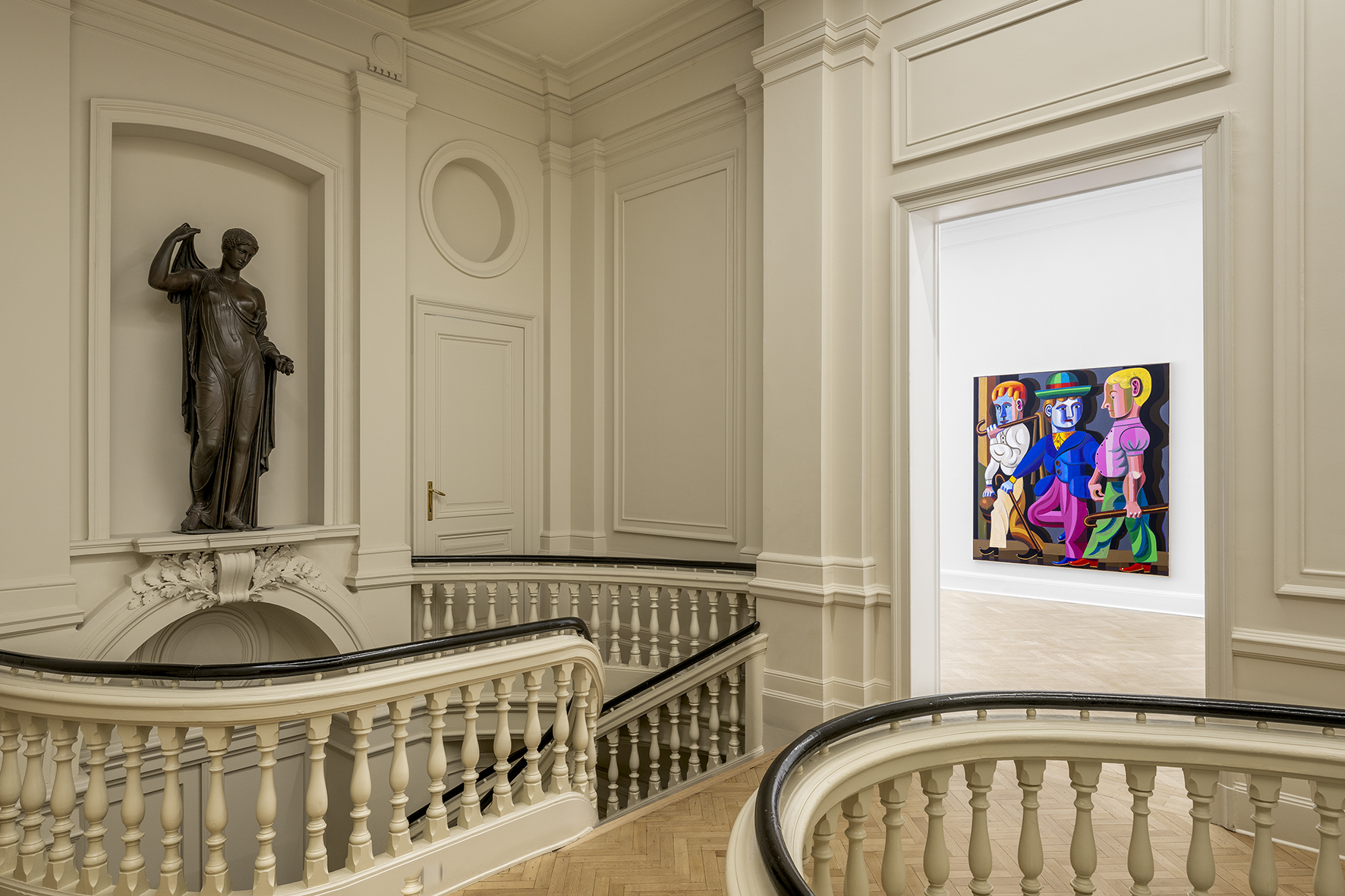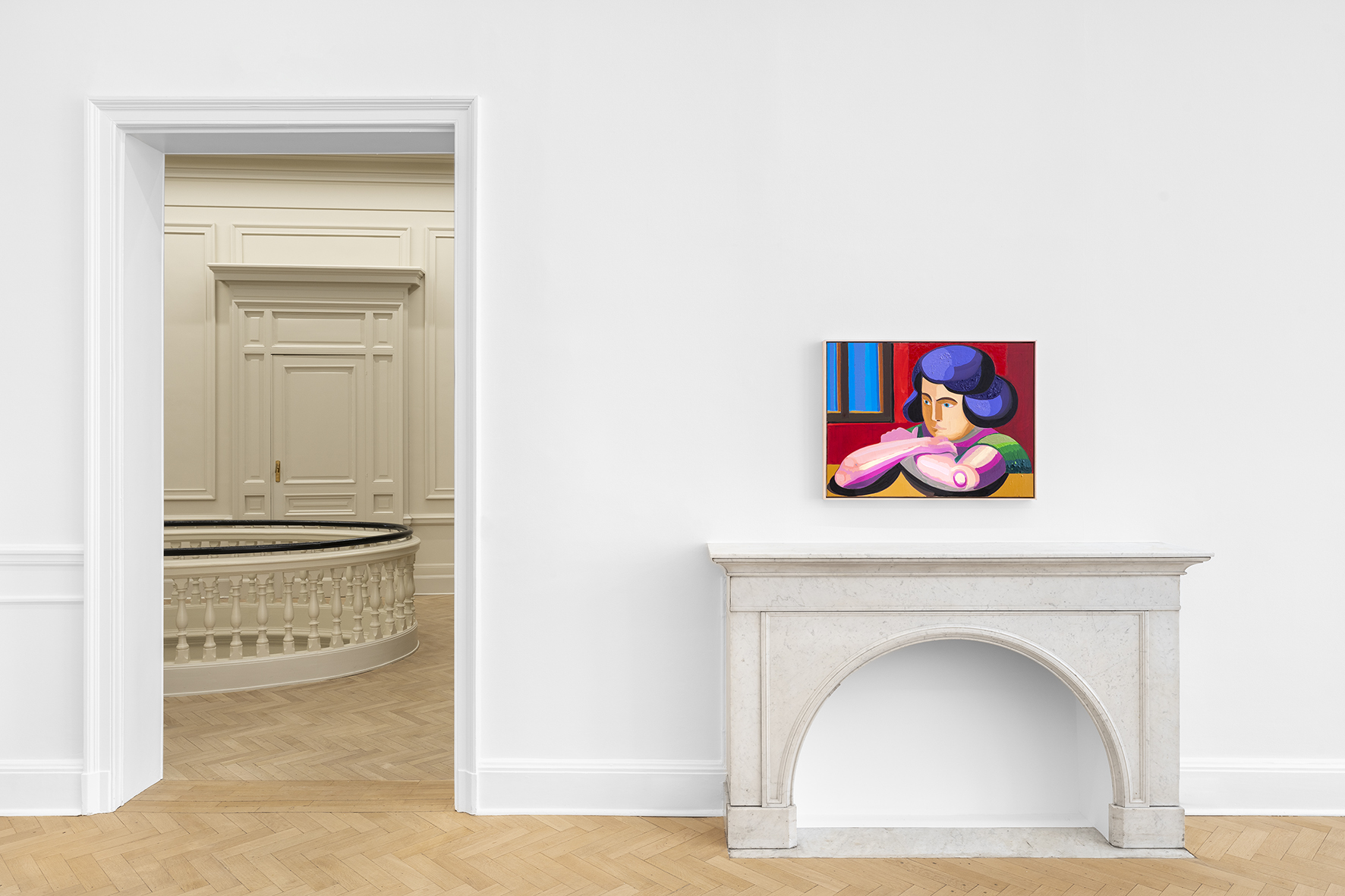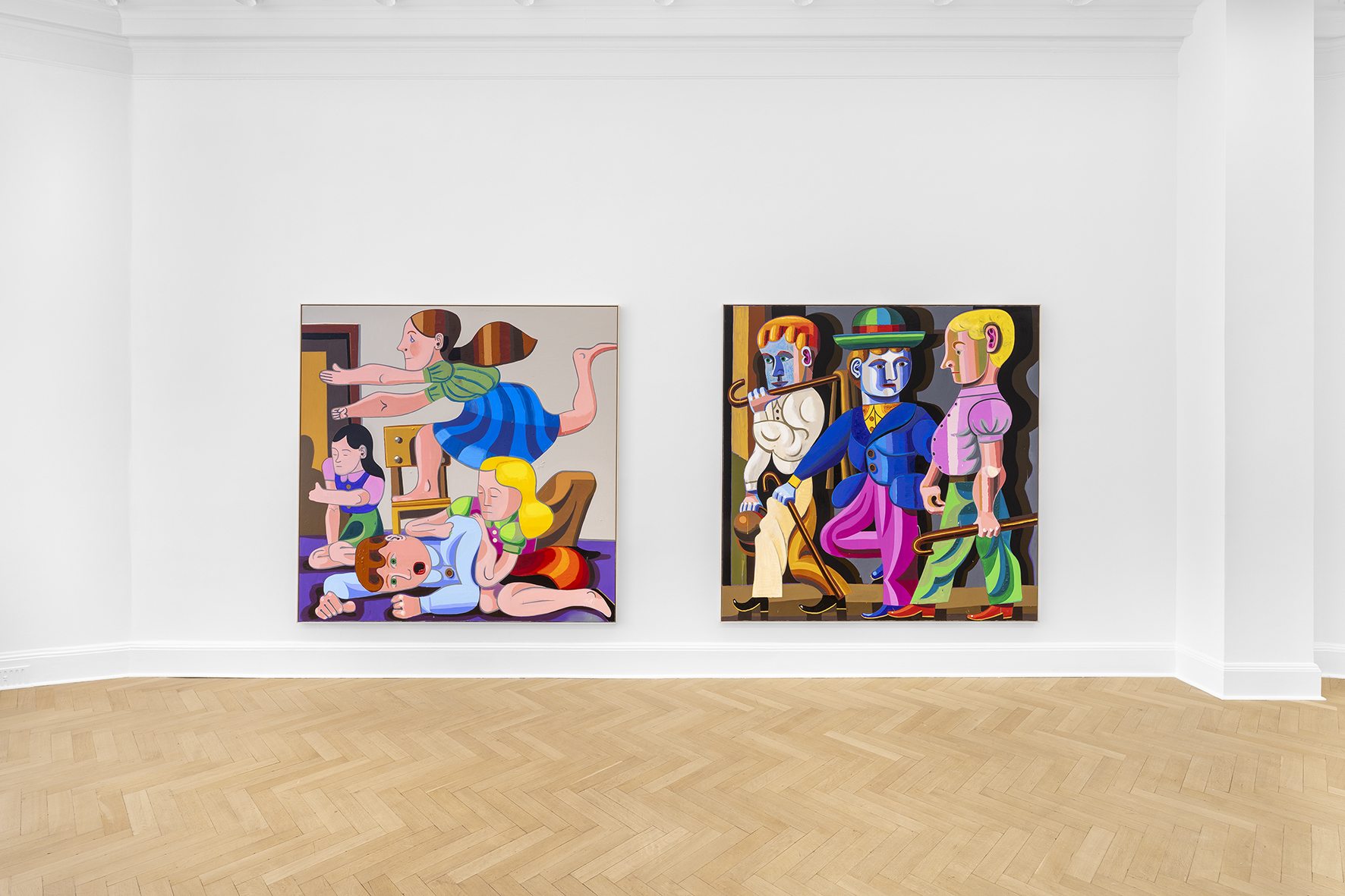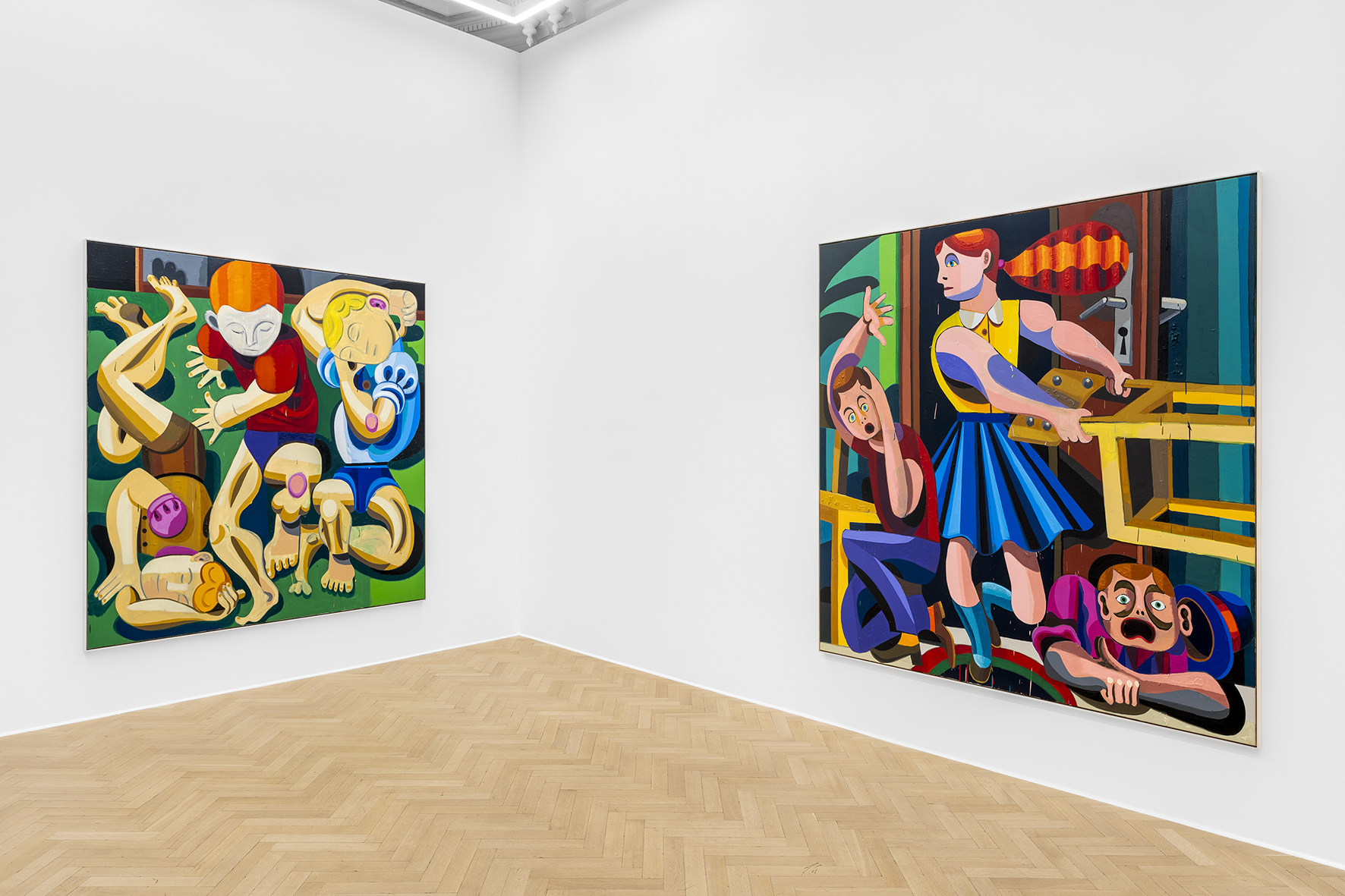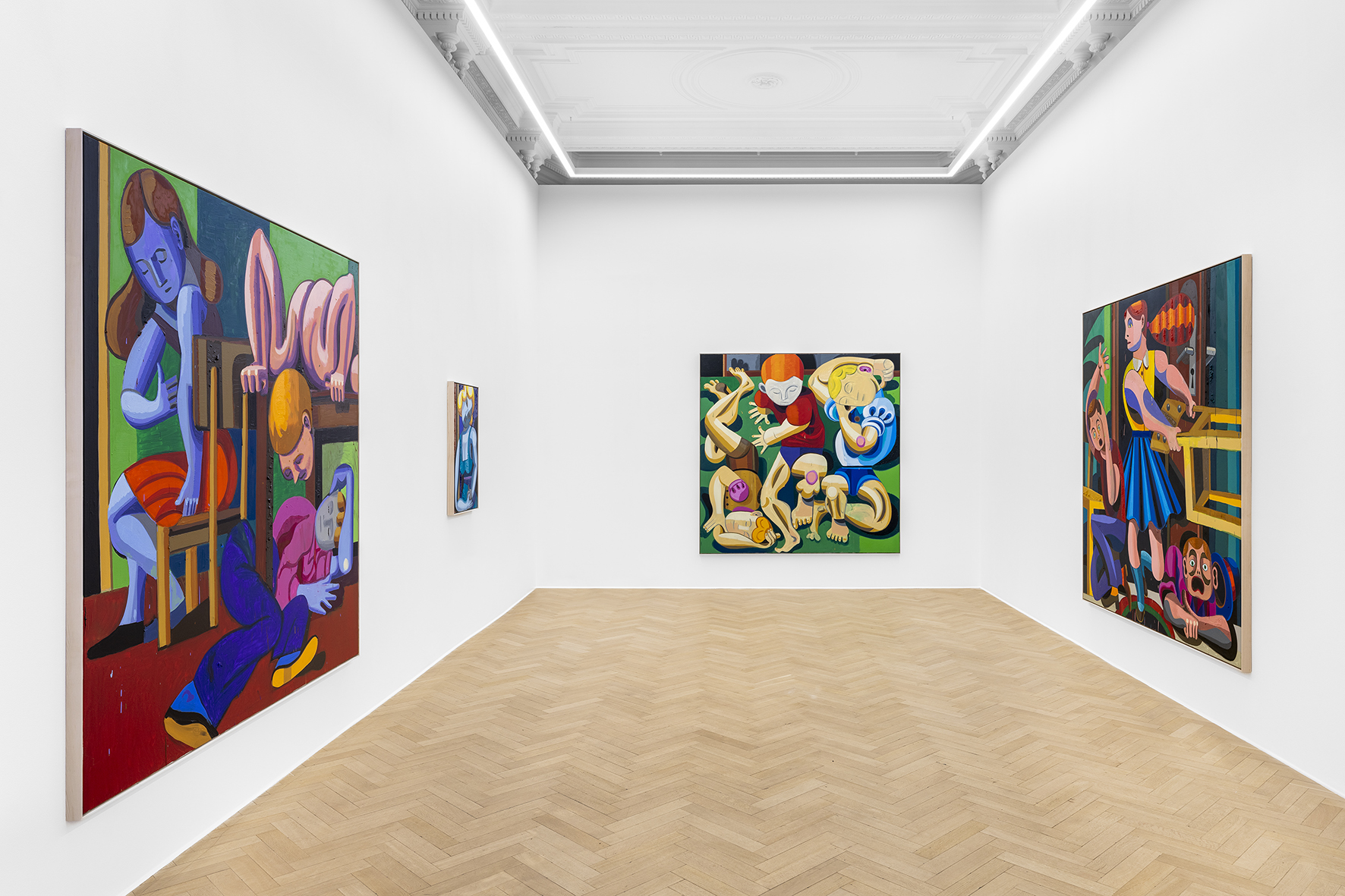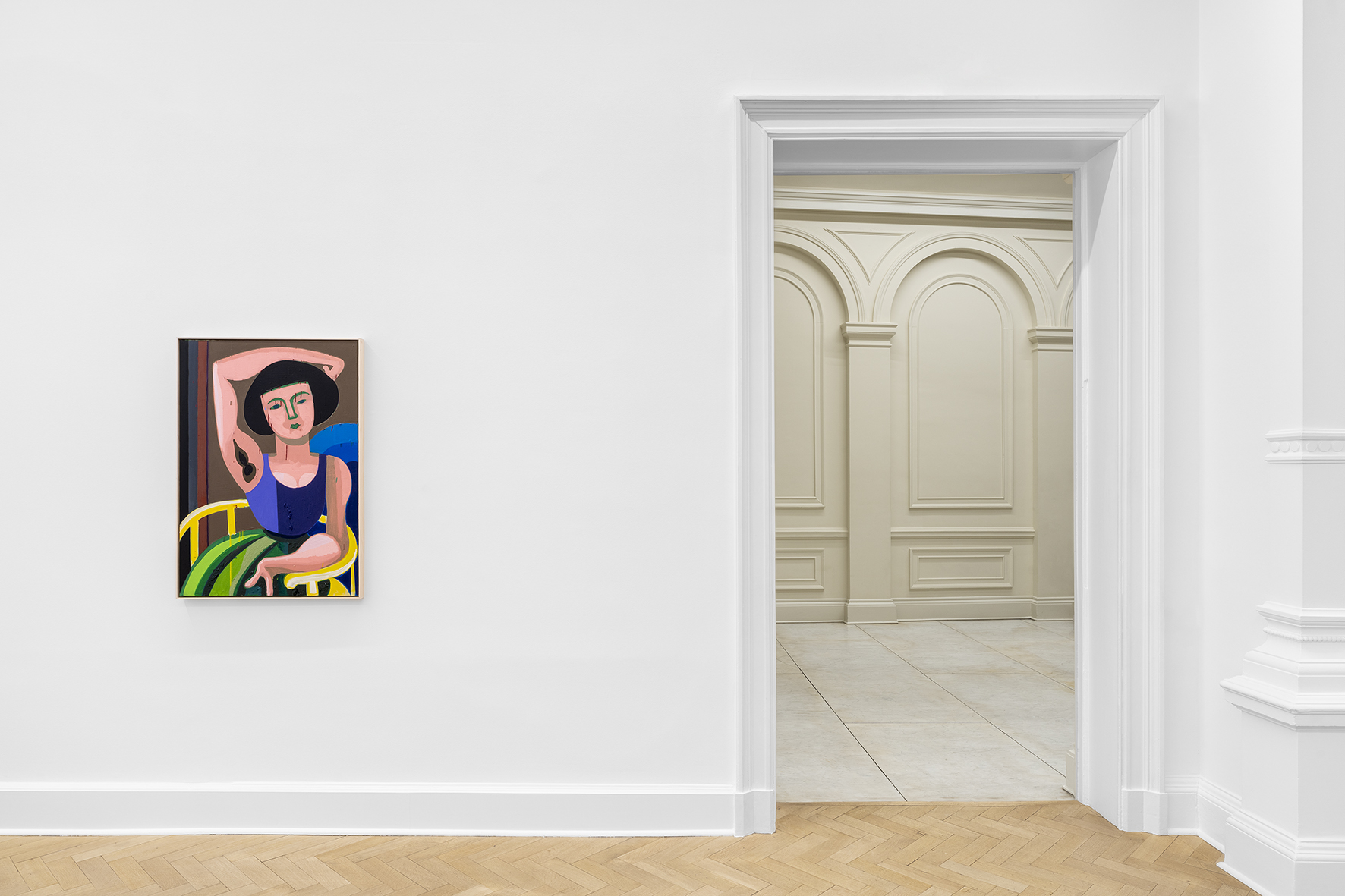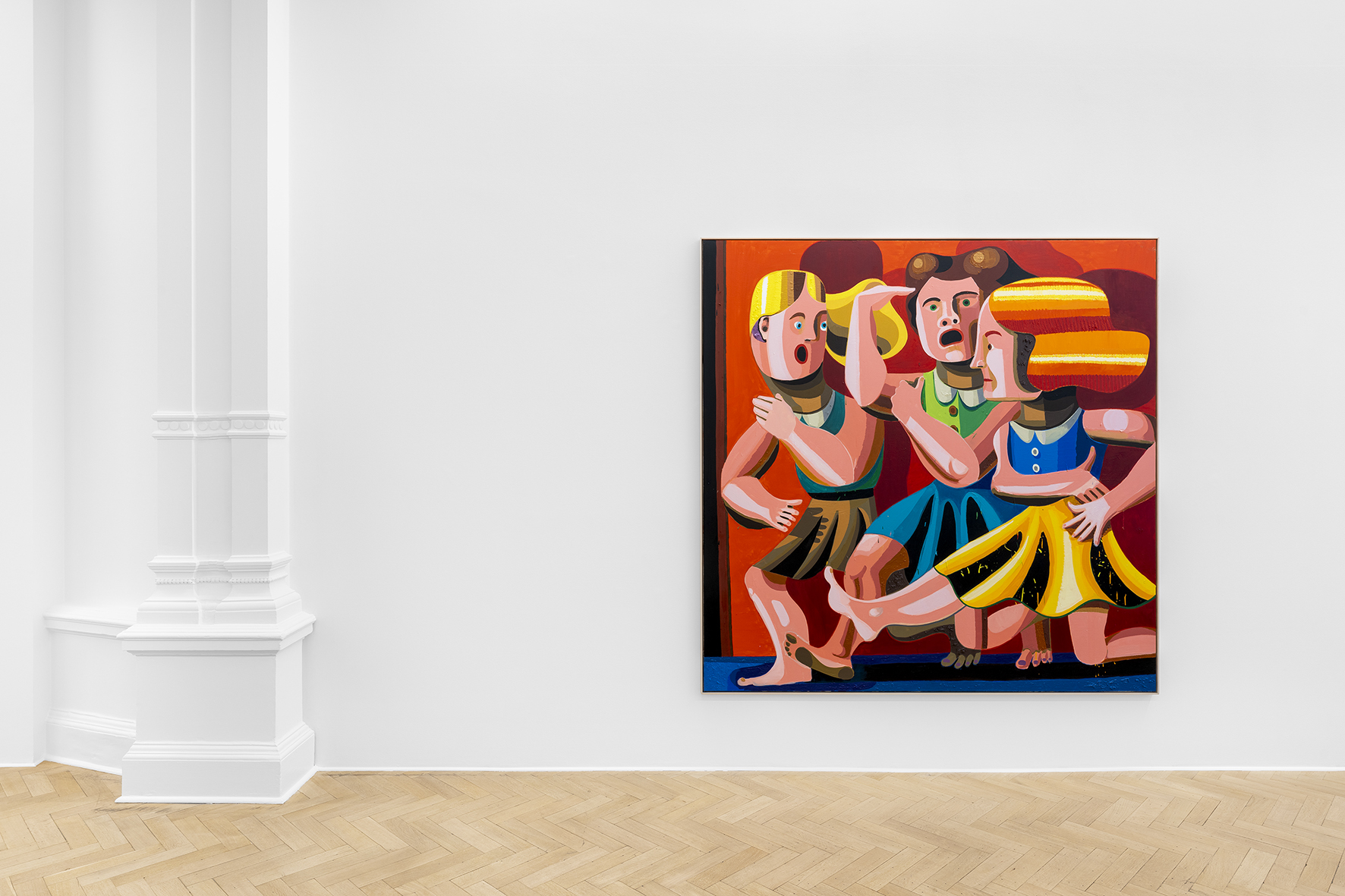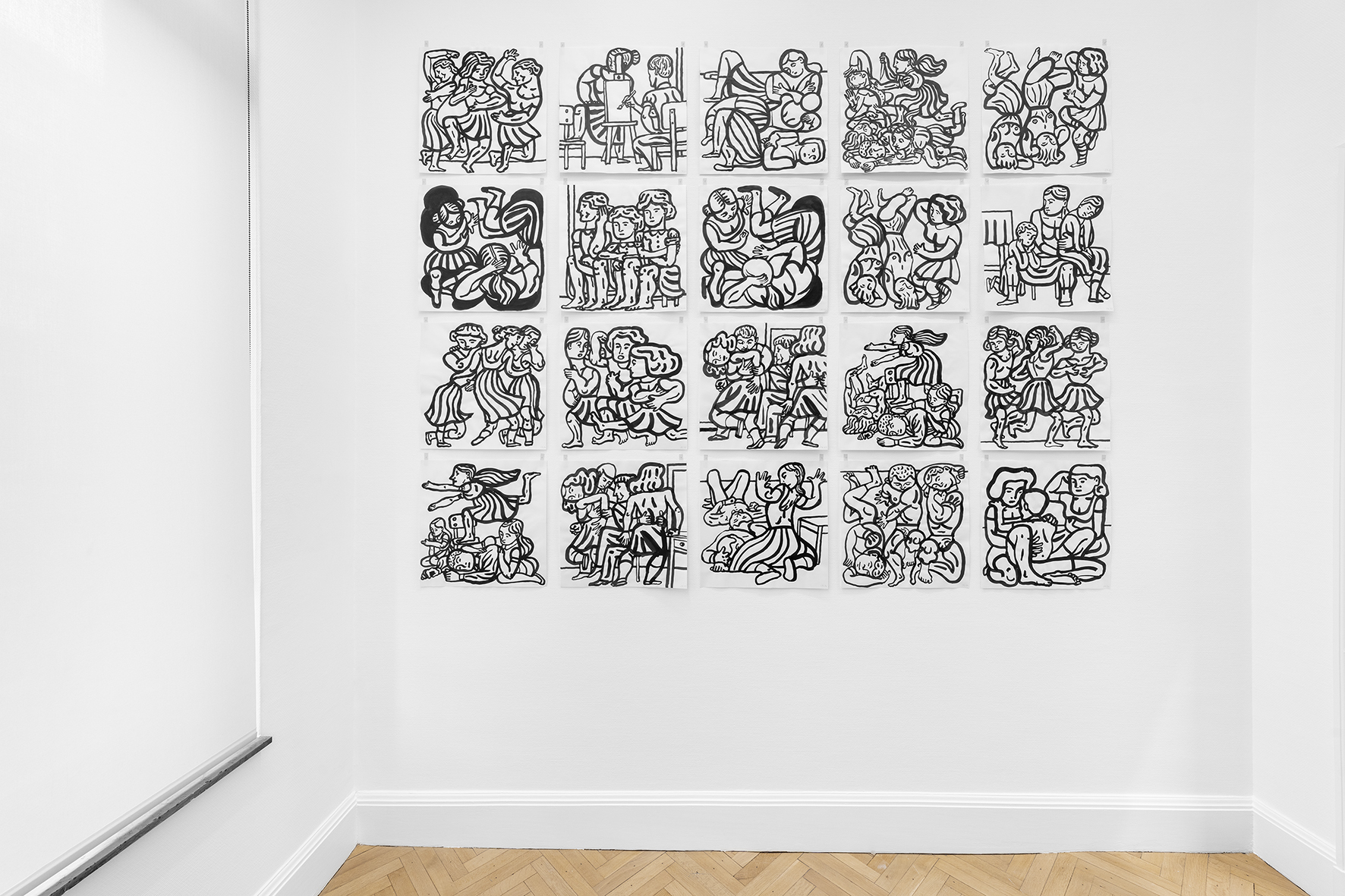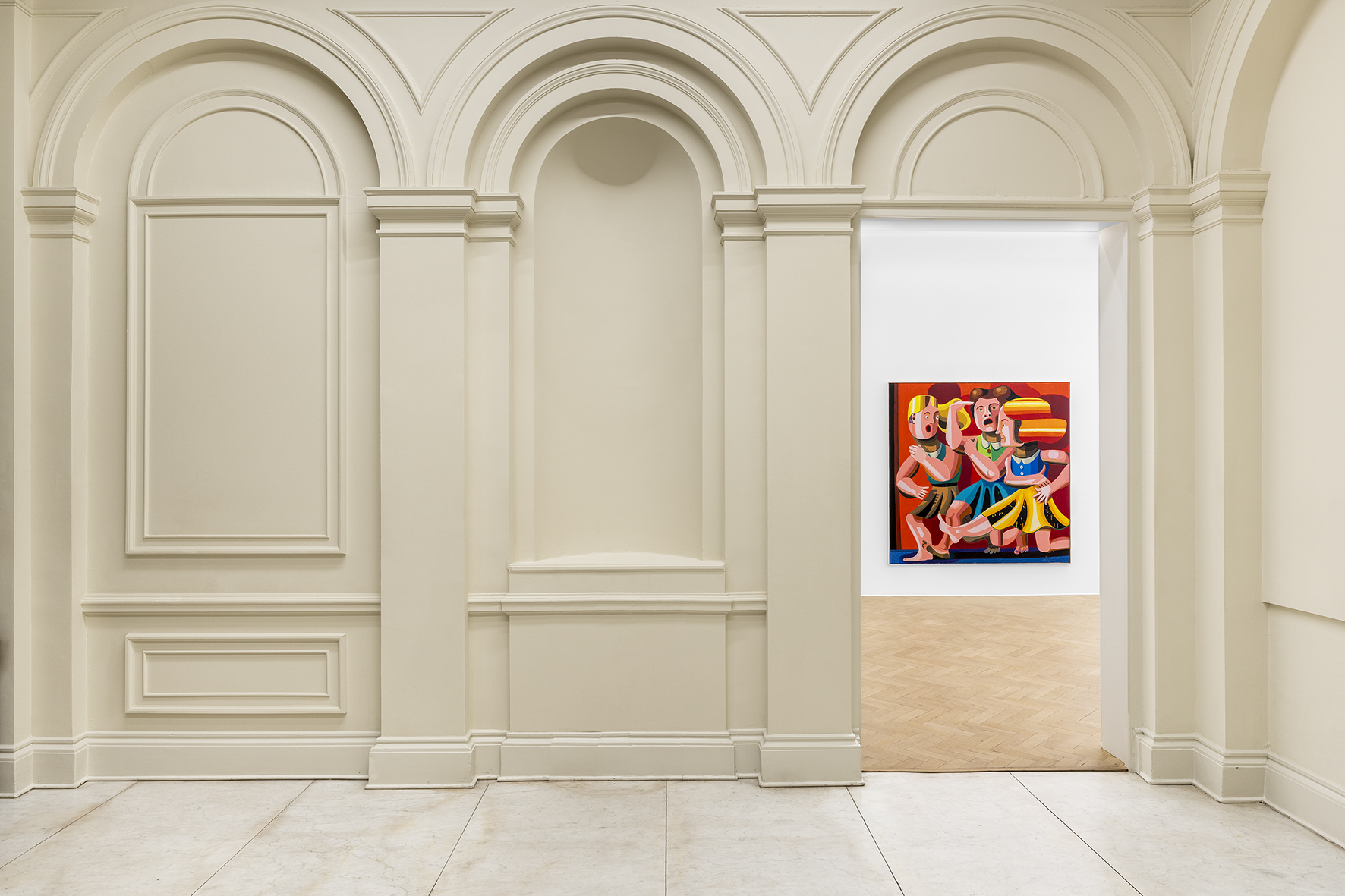
About
The painter begins his research with drawing, which evolves into drawings of figure arrangements, possible situations or situations with possibilities. He redraws the image without thinking about the content until developing the line and the form in a series of paintings that dialogue, oppose or respond to each other, frontally and without intrigue.
His painting is systematically built in a kind of challenge to academism. The image at Ruckhäberle is only called for the service of building a painting. He selects images to be transformed into paintings, treating them almost as randomly found elements, before the reign of imagery, not giving them any importance. They are used only to «masonry» a painting whose main intention is to give it a certain physicality: the painting must come out of the wall and not become a frame or window.
Nevertheless, the presence of figures indicates an underlying narrative. Here is one of the borrowings and its diversion to academism: three figures, three graces, three witches, three mothers, three characters are summoned and diverted.
Three characters in «The Three Sisters», the exhibition?s title. Here Chekhov was not necessarily summoned for his dramaturgy qualities but for the contradictory report that animates both the writer and the painter. Tchekhov questions the distance between what we are and what we would like to be, between the real and the imaginary. No heroes, little action; this piece goes against the classic scheme by staging extremely human characters Life and death are there. Hope and despair. Revolt and resignation. Youth and old age that one carries in oneself at the same time, simultaneously.
In the face of these dissensions, Christoph Ruckhäberle deploys an impressive amount of techniques and masterful gestures at the service of methodical construction of paintings. So that the painting lives. Not necessarily the characters, which are therefore excuses for movement, composition, balance or imbalance. He tries a balance between action and tranquility, flatness and relief, opposes simplicity of forms and complexity of poses, bodies in space, through interlacing layers of paintings. He seeks a contradiction within the matter itself.
